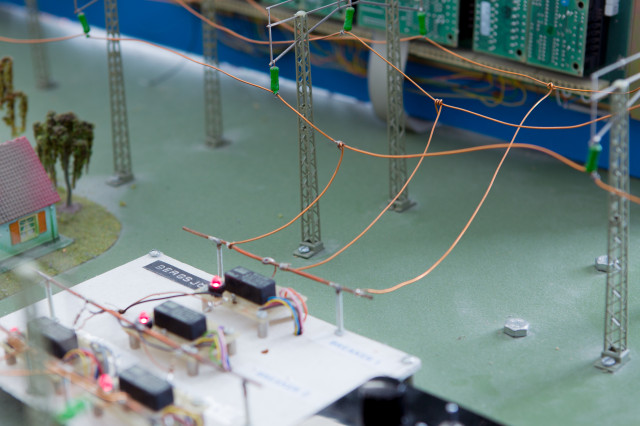Historical overview. General principles of electric traction and in particular electric railway systems. Tractive and braking effort. Power requirements and energy consumption. Traction vehicles; electric drives, transformers and converters, control and mechanical transmission. Power supply systems; ac and dc supplies. Power capacity, overhead catenary systems, overvoltages, line interference and electromagnetic compability, EMC.
EJ2400 Electric Traction 6.0 credits

The course gives an introduction to electric railway traction including traction mechanics, rail systems, electrical drives, and power supplies.
Information per course offering
Choose semester and course offering to see current information and more about the course, such as course syllabus, study period, and application information.
Information for Spring 2025 Start 17 Mar 2025 programme students
- Course location
KTH Campus
- Duration
- 17 Mar 2025 - 2 Jun 2025
- Periods
- P4 (6.0 hp)
- Pace of study
33%
- Application code
61446
- Form of study
Normal Daytime
- Language of instruction
English
- Course memo
- Course memo is not published
- Number of places
Places are not limited
- Target group
Open for all master programmes as long as it can be included in your programme.
- Planned modular schedule
- [object Object]
- Schedule
Contact
Stefan Östlund
Course syllabus as PDF
Please note: all information from the Course syllabus is available on this page in an accessible format.
Course syllabus EJ2400 (Spring 2020–)Content and learning outcomes
Course contents
Intended learning outcomes
Students should after course can:
- account for fundamental issues in electric railway traction including runninig resistance, tractive effort, adhesion, power and energy consumption,
- calculate tractive effort, power, acceleration and velocity of rail vehicles,
- describe the components in electric drives with induction motors and dc motors,
- make estimations of voltages, currents and power in the electric drives for rail vehicles with induction motors and dc motors,
- be familiar with other types of electric drives for rail vehicles,
- describe the design of ac and dc power supplies for electric traction,
- calculate the power capacity for different railway power supply systems,
- describe the background of electromagnetic interferences (EMI) in electric railway traction and give an account of important concepts and parameters.
Literature and preparations
Specific prerequisites
Degree of Bachelor (180 credits) or the equivalent. Documented skills in English equivalent English B/English 6.
Recommended prerequisites
One of the following courses are recommended; EJ2200 Electrical Machines and Drives, EJ1200 Electric Power Systems or EJ2300 Power Electronics.
Equipment
Literature
Examination and completion
If the course is discontinued, students may request to be examined during the following two academic years.
Grading scale
Examination
- TEN2 - Home assignments and written exam, 6.0 credits, grading scale: A, B, C, D, E, FX, F
Based on recommendation from KTH’s coordinator for disabilities, the examiner will decide how to adapt an examination for students with documented disability.
The examiner may apply another examination format when re-examining individual students.
Opportunity to complete the requirements via supplementary examination
Opportunity to raise an approved grade via renewed examination
Examiner
Ethical approach
- All members of a group are responsible for the group's work.
- In any assessment, every student shall honestly disclose any help received and sources used.
- In an oral assessment, every student shall be able to present and answer questions about the entire assignment and solution.
Further information
Course room in Canvas
Offered by
Main field of study
Education cycle
Add-on studies
Contact
Transitional regulations
All earlier test parts are now included in TEN2.
Supplementary information
N.B. Courses EJ2400 Electric Traction and EJ2440 Electric Transportation, contain to a certain extent the same material. It is therefore not possible to include both courses for the same degree. A complementary course to EJ2400 Electric Traction can be EJ2410 Hybrid Vehicle Drives.
In this course, the EECS code of honor applies, see: http://www.kth.se/en/eecs/utbildning/hederskodex.